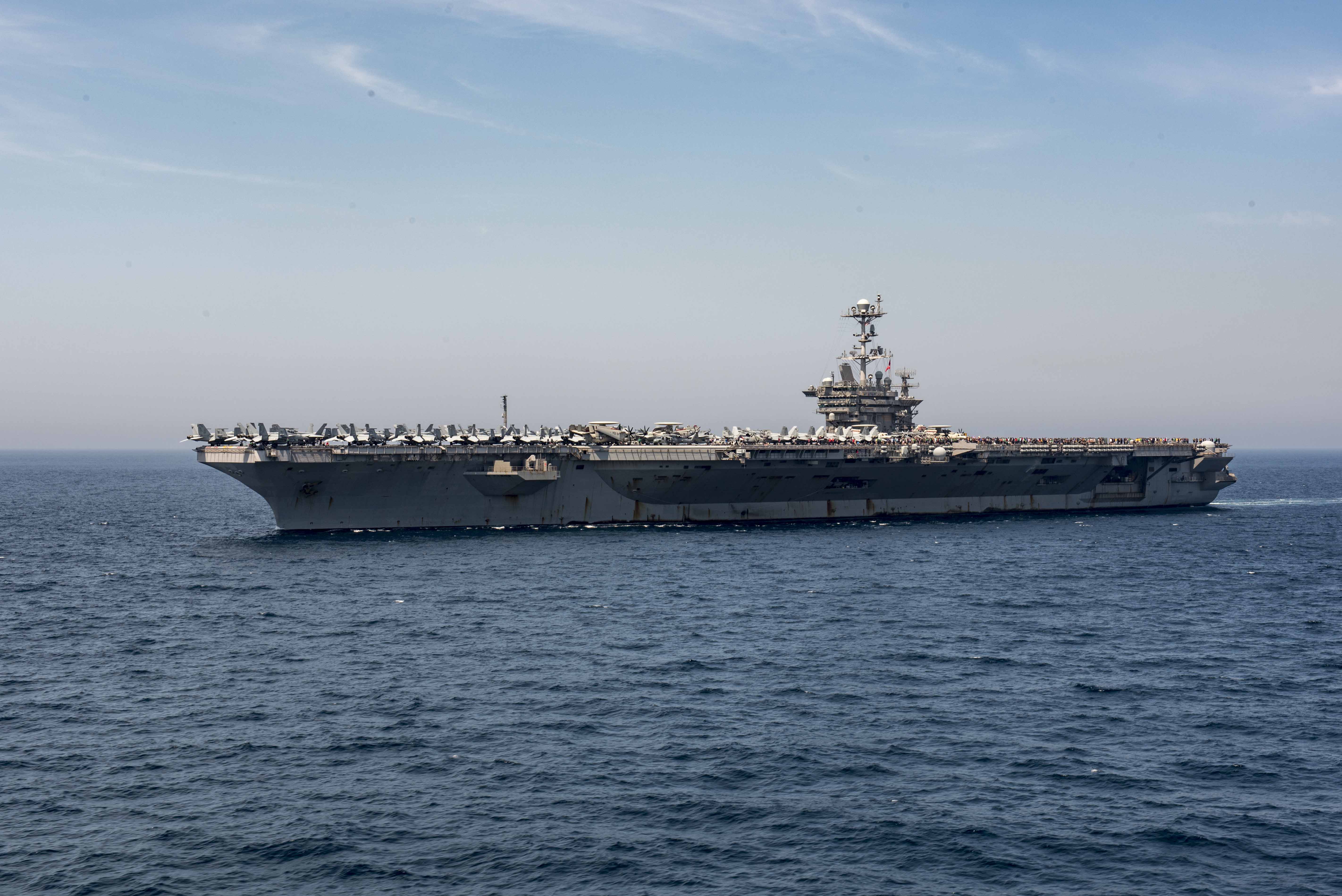
After spending a little more than three months at sea in the Mediterranean and Atlantic, USS Harry S. Truman (CVN-75) and three escorts assigned to Carrier Strike Group 8 returned to Naval Station Norfolk, Va. on Saturday.
Carrier Air Wing 1, guided-missile cruiser USS Normandy (CG-60), and guided-missile destroyers USS Arleigh Burke (DDG-51) and USS Forrest Sherman (DDG-98) also returned to Norfolk.
The short deployment of CSG 8 is intended to make it harder for adversaries to anticipate and predict Navy operations, according to a U.S. Fleet Forces statement from last week. For the first time in more than a decade, an East Coast-based CSG did not operate in the Red Sea or Persian Gulf during its deployment.
While Truman’s deployment length was not announced ahead of time, the idea a carrier would return to port earlier than normal has for some time been discussed by Navy planners. In May, while visiting USS George H.W. Bush (CVN-77), Chief of Naval Operations Adm. John Richardson hinted such a short deployment was coming.
“Maybe we increase naval power by bringing the strike group back a little early and we do high-end strike-group-on-strike-group exercises or training like that,” Richardson told USNI News in May.
The National Defense Strategy calls for U.S. forces to be “strategically predictable, but operationally unpredictable.” Shifting deployment lengths is one way to accomplish this, Richardson said during the May interview.
Also, since Truman was only at sea for about half the length of what had become a standard deployment length, the ship, crew and associated air wing will remain ready for a quick return to sea, if needed, Fleet Forces said.
The return to port was absent the pomp of traditional strike group returns.
“You’ll notice I’m in a working uniform the captain is in his flight suit. We don’t have any balloon makers, we don’t have a band and all that because this is a working port,” CSG 8 commander Rear Adm. Gene Black told local reporters on Saturday. “We’re not sure exactly how long we’re going to be here but when we’re told to sail, we’ll be ready to go. There’s nothing that drove us back other than showing our flexibility operationally and our ability to do things slightly different.”
When Truman left for deployment in April, the carrier was joined by a much larger-than-normal escort force. Along with Normandy, Arleigh Burke and Forrest Sherman, CSG 8 included guided-missile destroyers USS Farragut (DDG-99), USS Bulkeley (DDG-84), USS Jason Dunham (DDG-109), USS The Sullivans (DGG-68) and the German Navy guided-missile frigate FGS Hessen (F221). Jason Dunham and The Sullivans deployed after the bulk of CSG 8 arrived in theater.
Hessen returned to its homeport of Wilhelmshaven, Germany, according to a report in the Europe-based maritime news site Naval Today. The U.S. Navy has not stated the missions currently performed by the CSG 8 ships still at sea. The Sullivans, for instance, completed a transit of the Strait of Hormuz earlier this week, according to the Navy and Farragut completed an underway replenishment Thursday, according to the ship’s Facebook post. Jason Dunham has operated as far south as the Red Sea as part of the deployment.





